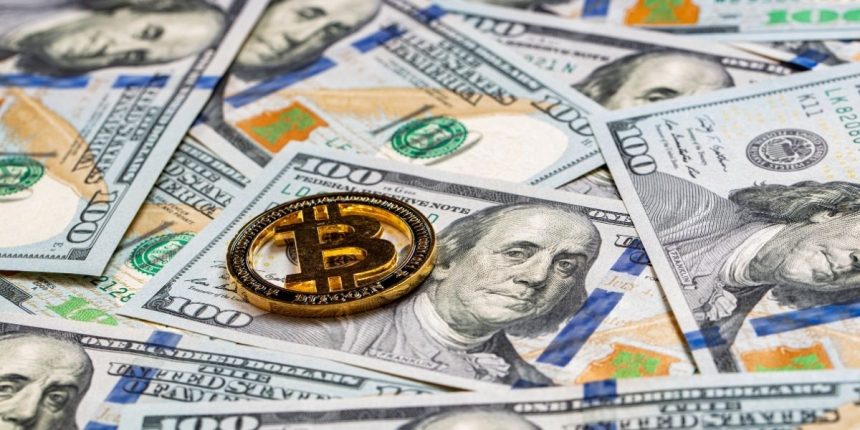BTC continues to move to a new daily low and the Fed minutes were not enough to end the decline. In fact, we can say that it contains details that support the decline. While the interest rate cut expectation in December has dropped significantly, we will discuss the Fed minutes in full detail for you and look for important clues here.
October Interest Deduction Decision
Almost all Fed members raised their hands for a 25bp cut in October. Only Miran and Schmid voted against it. As you know, Miran is Trump’s Fed representative and he opposed the October decision because he wanted a 50bp discount. Schmid, on the other hand, argued that there was no need to reduce interest rates.
Jeffrey R. Schmid’s reasoning is that inflation remains above the 2% target and he must be concerned that inflation readings are rising in his view. The Fed member, who advocates for confidence in inflation moving towards the target, is also worried about increasing long-term inflation expectations.
We will be watching the future statements of Schmid, who stands out with his hawkish stance, especially closely. His market assessments will give us readings of the Fed’s extreme hawkish stance.
Jerome H. Powell, Chairman; John C. Williams, Vice President; Michael S. Barr; Michelle W. Bowman; Susan M. Collins; Lisa D. Cook; Austan D. Goolsbee; Philip N. Jefferson; Alberto G. Musalem; and Christopher J. Waller 25bp interest rate reduction He raised his hand in favor. Williams and Waller are generally in favor of faster easing, and their statements continue to be in that direction.
Now, if we add up all these, the possibility of keeping rates constant seems strong for the Fed, which will have to make its second blind decision in December. As a matter of fact, the decline experienced in the last few hours was triggered by the statement that “We will not be able to publish the BLS’s October employment report”, which said that the blind decision was finalized.
QT Ends, Quantitative Expansion Begins
We see that Fed Chairman Powell recommended at the meeting to stop the reduction of the System Open Market Account (SOMA) portfolio soon.
“Continued balance sheet tightening means that volatility in money markets will likely continue to intensify. Excessive money market interest rate volatility would pose risks to the control of the policy rate and the stability of funding in the repo market, which could impact the stability of the U.S. Treasury market.” – Recommendation to Powell
Participants agreed that the recent tightening in money market conditions indicates that it would be appropriate to end balance sheet shrinkage soon and that reinvestment of principal payments received from the agency securities portfolio should be directed to Treasury bills.
Nearly all participants agreed to end the reduction of the Committee’s securities holdings as of December 1. Then, instructions were given to the New York Fed to implement 6 steps to implement this decision. Since steps such as monetary expansion were previously implemented here, NY Fed President’s this month QE statements We mentioned it while transferring. The parts of the instructions that interested us were as follows:
“To reinvest principal payments from the Federal Reserve’s agency debt and agency mortgage-backed securities (MBS) portfolio in October and November, exceeding the $35 billion monthly limit, into treasury securities to approximately match the maturity distribution of treasury securities. Beginning December 1, to reinvest all principal payments from the Federal Reserve’s agency securities portfolio into treasury bills.
To replenish at auction the Federal Reserve’s principal payments on Treasury securities maturing in October and November that exceed the $5 billion monthly cap. To redeem Treasury coupon securities up to this monthly upper limit and Treasury bills to the extent that coupon principal payments do not exceed the monthly upper limit. To renew at auction all principal payments received by the Federal Reserve on Treasury securities, beginning December 1.”
So technically, the Fed has left the period of complete monetary tightening behind. The only problem is how quickly interest rates will be reduced. This tells us that the belief in the potential of tariff-induced inflation to create an environment that will lead to interest rate increases in the long term has not found acceptance among Fed members.
Future Predictions
It is stated that there are strongly differing opinions among Fed members regarding the interest rate decision to be taken in December. The most important detail here is what the majority’s stance, or rather their expectations, are. The majority said at the October meeting that it would be better if interest rates remained constant for December. This means that the hand of those who say that it should remain constant is strengthened, especially since we will not see the October employment report.
“A few participants He evaluated that if the economy develops in line with his expectations in the period between meetings, it may be appropriate to further reduce the federal funds rate target range in December. Many participants He stated that, based on their economic outlook, it would be appropriate to keep the target range unchanged for the rest of the year. “All participants agreed that monetary policy is not on a predetermined course and will be shaped by a wide range of data, the evolving economic outlook and the balance of risks.”
Although the dominant opinion is fragmented, those who do not want a discount in December still seem to be the majority in this group. Many are more than few.
Inflation Expectations
The 2.8% forecast for PCE in September shows us that PCE price inflation increased by 0.5 points compared to a year ago, and core PCE inflation remained unchanged from its rate a year ago. In other words, inflation can be said to be controlled. However, members who say that core inflation has increased since the beginning of the year and remained above the target 2% are in favor of acting cautiously.
As in previous months, Fed members have given up on concerns that customs duties will have serious inflationary consequences. This is good. Although tariffs are expected to continue upward pressure on inflation in 2026, a return to the disinflationary trend is expected after 2026.
Some additional increase in core goods inflation is expected in the short term.
“Staff’s inflation forecast was broadly similar to the forecast prepared for the September meeting, with tariff increases expected to put upward pressure on inflation in 2025 and 2026. After that, inflation was projected to return to its previous deflationary trend.
Staff continued to view forecast uncertainty as high, with the labor market cooling, inflation still at high levels, increased uncertainty about government policy changes and their impact on the economy, and limited data due to the government shutdown. Risks to employment and GDP forecasts continued to be assessed to the downside, as high economic uncertainty and labor market cooling increased the risk of a sharper than expected weakening in labor market conditions and output growth. “Risks to the inflation forecast continued to be assessed to the upside, as high levels of some expected inflation measures and actual inflation running above 2% for more than four years raise the possibility that this year’s inflation increase will be more persistent than staff had anticipated.”
Employment Prospects
They also mentioned in their employment discussions that they could not see a clear picture due to the government shutdown. I need to open a small parenthesis here. If there is such a problem for the Fed at this decision point even at the October meeting, it will be a surprise if the institution, which will enter December more blindly, reduces interest rates.
In light of the available data, it was said that the unemployment rate remained at a low level, although it increased slightly throughout August. Members who have not seen the September employment report used various data, but this report will be published tomorrow. In other words, if the employment report coming on Thursday is worse than expected, this may pave the way for a surprise reduction in December by drowning out the “slightly rising but remaining low since August” detail.
“Participants generally attributed the slowdown in employment growth to both declining labor supply due to immigration and reduced labor force participation, and declining labor demand amid moderate economic growth and increased uncertainty. Many participants noted that structural factors, such as investments in artificial intelligence and other productivity-enhancing technologies, may contribute to weakening labor demand.”
Cryptocurrency Expectations
Now, let’s see where we are in the light of all this. BTC is making a deeper bottom near $88,700. ETH lost $2,900 and XRP Coin is about to drop below $2. Fed members have every reason to keep rates steady in December. Moreover, what we pointed out above is the difference between “a few members” and “many members”. This tells us that the members who think that a rate cut in December will not be appropriate are dominant.
If even at the October meeting interest rate reduction Members who are negative about the raid and have to make a blind decision can easily raise their hand to keep the rates constant. But there is one detail. Japan announced an incentive package of over 100 billion dollars and did so just this Sunday. If Japanese 10-year yields have returned to a record level that has not been seen for years and liquidity begins to withdraw from global markets, the Fed may relax faster to prevent bonds from being hit.
What will matter for cryptocurrencies in December will be how seriously the Fed will take Japan. As a matter of fact, the possibility of the Bank of Japan increasing interest rates on December 18 is increasing.
And also cryptocurrencies Nvidia earnings report coming at 00:20 is very critical. What does it have to do with the Fed? The minutes detail that some members “warned that a sudden reassessment of expectations regarding artificial intelligence could lead to disorderly declines in stocks.”

BTC This is the current situation in the eyes of the Fed as it continues to run to deeper bottoms.






